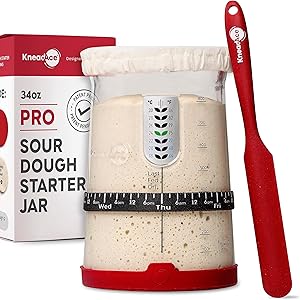Understanding Yeast Activation
Yeast activation is a critical step in the fermentation process, where yeast cells become active and begin to convert sugars into alcohol and carbon dioxide. This process typically involves hydrating the yeast and allowing it to feed on sugars, which is essential for brewing and baking. However, the timing of this activation is crucial, as letting yeast activate for too long can lead to several undesirable outcomes.
Effects of Over-Activation
When yeast is allowed to activate for an extended period, it can lead to over-fermentation. This occurs when the yeast consumes all available sugars, resulting in a lack of food for the yeast. Consequently, the yeast may begin to produce off-flavors and undesirable byproducts, which can negatively impact the taste and quality of the final product. This is particularly important in brewing, where the flavor profile is paramount.
Alcohol Production and Its Consequences
One of the primary functions of yeast is to produce alcohol during fermentation. However, if yeast is allowed to activate too long, it can produce excessive amounts of alcohol, leading to an imbalanced beverage. In baking, this can cause the dough to become overly alcoholic, which may affect the rise and texture of the final baked goods. Understanding the balance of yeast activation is essential for achieving the desired alcohol content.
Carbon Dioxide Levels and Dough Structure
Yeast also produces carbon dioxide as a byproduct of fermentation, which is crucial for leavening bread. If yeast is allowed to activate for too long, the carbon dioxide levels can become excessive, leading to a dough that is overly aerated. This can result in a bread that has a poor structure, with large holes and an uneven crumb. Proper timing in yeast activation is vital for achieving the right texture in baked products.
Flavor Development and Off-Flavors
Extended yeast activation can lead to the development of off-flavors, which are often described as sour or overly fruity. These flavors arise from the production of various compounds, such as esters and phenols, that can be generated when yeast is stressed or overactive. In brewing, this can result in a beer that is unpalatable, while in baking, it can lead to bread that has an undesirable taste.
Get more content like this!
Sign up to receive updates and new terms first hand.
Yeast Viability and Health
Allowing yeast to activate for too long can also affect its viability and health. Yeast cells can become stressed due to prolonged activation, leading to a decrease in their ability to ferment effectively. This can result in sluggish fermentation, where the yeast fails to complete the fermentation process, leaving unfermented sugars in the final product. Monitoring yeast activation time is essential for maintaining yeast health.
Temperature and Yeast Activity
Temperature plays a significant role in yeast activation. If yeast is activated at higher temperatures for too long, it can lead to rapid fermentation and the production of unwanted flavors. Conversely, if the temperature is too low, the yeast may not activate properly. Finding the right temperature and timing is crucial for optimal yeast performance and flavor development.
Impact on Final Product Quality
The quality of the final product is directly influenced by the yeast activation process. Over-activated yeast can lead to inconsistencies in flavor, aroma, and texture. In brewing, this can result in a beer that lacks balance, while in baking, it can produce bread that is dense and unappealing. Understanding the importance of timing in yeast activation is key to achieving high-quality results.
Best Practices for Yeast Activation
To avoid the pitfalls of over-activation, it is essential to follow best practices for yeast activation. This includes monitoring the activation time closely, using the appropriate temperature, and ensuring that the yeast is properly hydrated. By adhering to these guidelines, brewers and bakers can achieve optimal fermentation results and produce products that are flavorful and well-structured.
Conclusion on Yeast Activation Timing
In summary, allowing yeast to activate for too long can have significant negative effects on the fermentation process and the quality of the final product. By understanding the implications of over-activation and implementing best practices, individuals can ensure successful fermentation and create products that meet their desired flavor and texture profiles.




